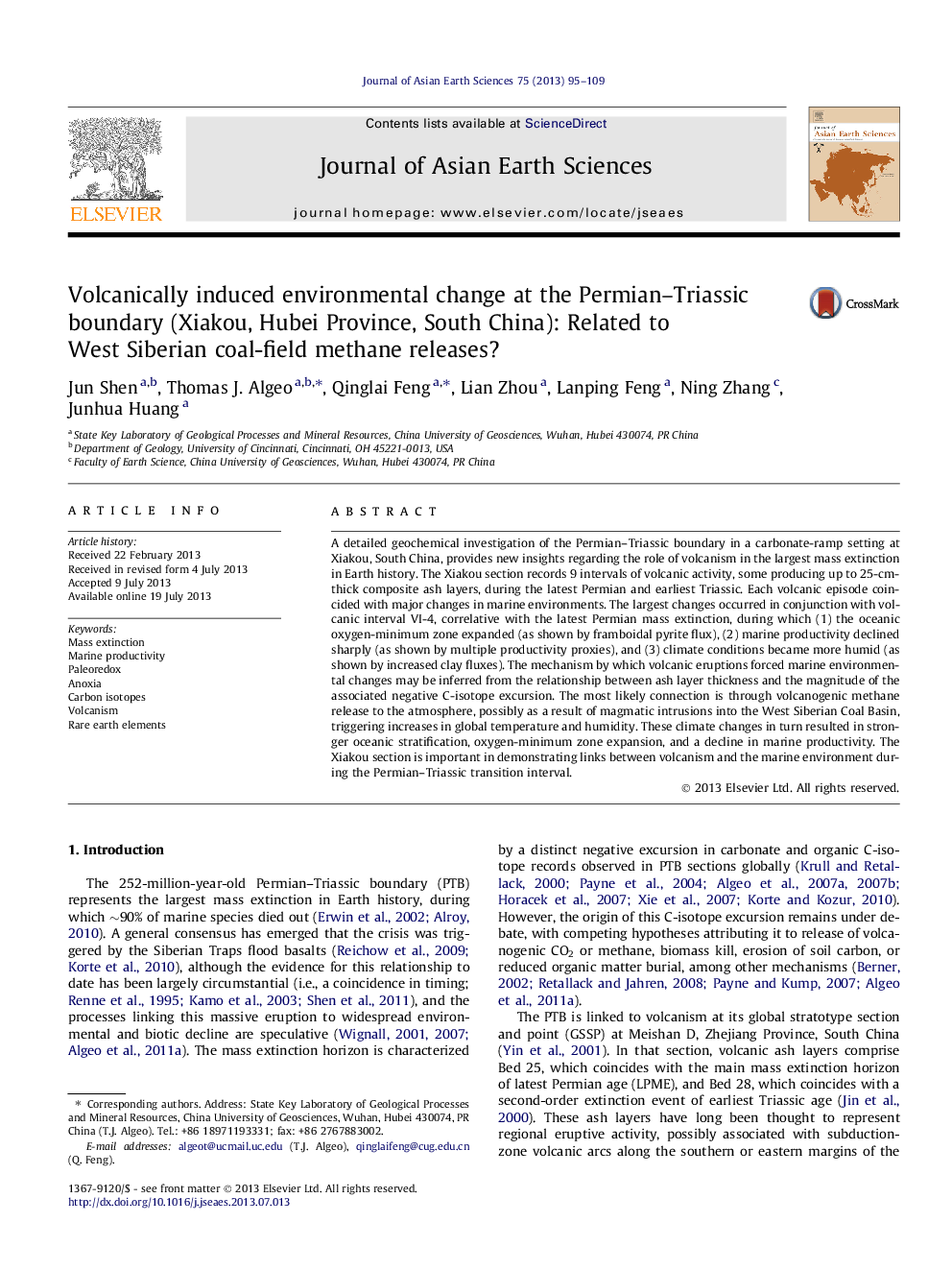| کد مقاله | کد نشریه | سال انتشار | مقاله انگلیسی | نسخه تمام متن |
|---|---|---|---|---|
| 4730945 | 1640392 | 2013 | 15 صفحه PDF | دانلود رایگان |

• The end-Permian mass extinction was closely linked to large-scale volcanic activity at Xiakou (South China).
• Each eruption caused major marine environmental changes, i.e., more hypoxic conditions and decreased productivity.
• Each volcanic eruption was associated with a negative shift in δ13C of seawater dissolved inorganic carbon.
• These negative carbon isotopic shifts were probably due to massive releases of methane.
• The likeliest source of methane was from Siberian Traps magmatic intrusions into the West Siberian Coal Basin.
A detailed geochemical investigation of the Permian–Triassic boundary in a carbonate-ramp setting at Xiakou, South China, provides new insights regarding the role of volcanism in the largest mass extinction in Earth history. The Xiakou section records 9 intervals of volcanic activity, some producing up to 25-cm-thick composite ash layers, during the latest Permian and earliest Triassic. Each volcanic episode coincided with major changes in marine environments. The largest changes occurred in conjunction with volcanic interval VI-4, correlative with the latest Permian mass extinction, during which (1) the oceanic oxygen-minimum zone expanded (as shown by framboidal pyrite flux), (2) marine productivity declined sharply (as shown by multiple productivity proxies), and (3) climate conditions became more humid (as shown by increased clay fluxes). The mechanism by which volcanic eruptions forced marine environmental changes may be inferred from the relationship between ash layer thickness and the magnitude of the associated negative C-isotope excursion. The most likely connection is through volcanogenic methane release to the atmosphere, possibly as a result of magmatic intrusions into the West Siberian Coal Basin, triggering increases in global temperature and humidity. These climate changes in turn resulted in stronger oceanic stratification, oxygen-minimum zone expansion, and a decline in marine productivity. The Xiakou section is important in demonstrating links between volcanism and the marine environment during the Permian–Triassic transition interval.
Journal: Journal of Asian Earth Sciences - Volume 75, 5 October 2013, Pages 95–109